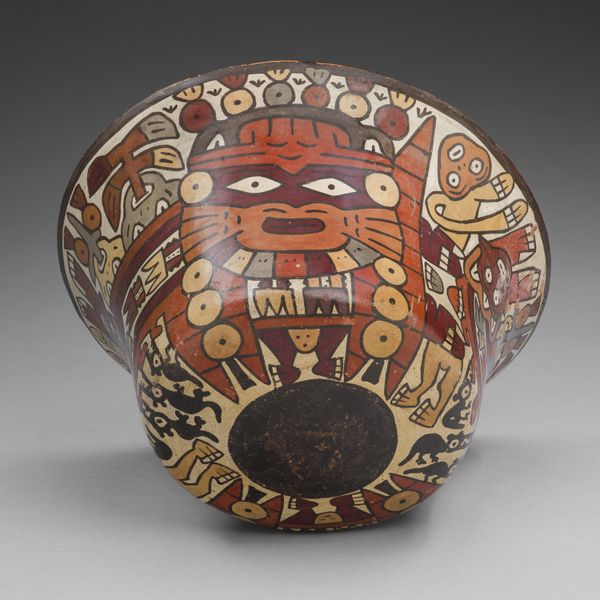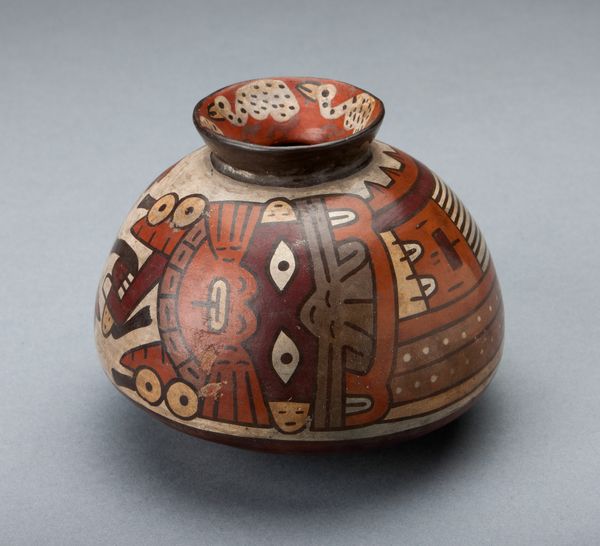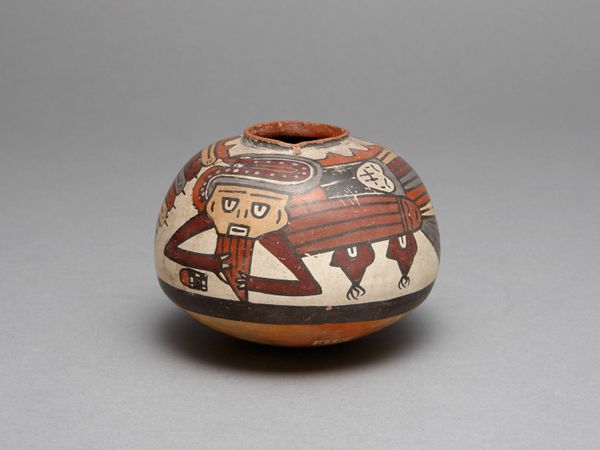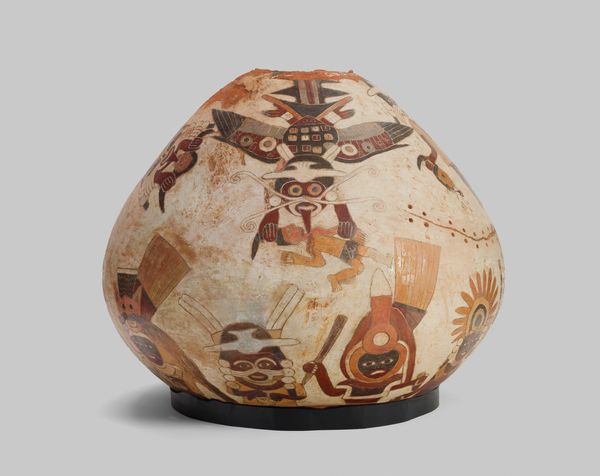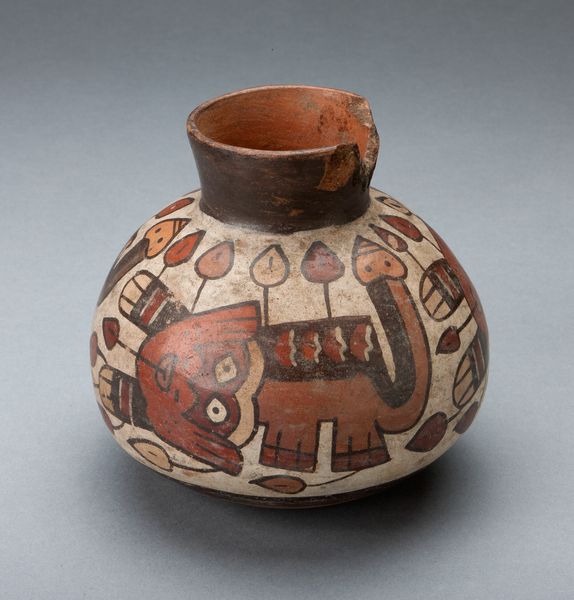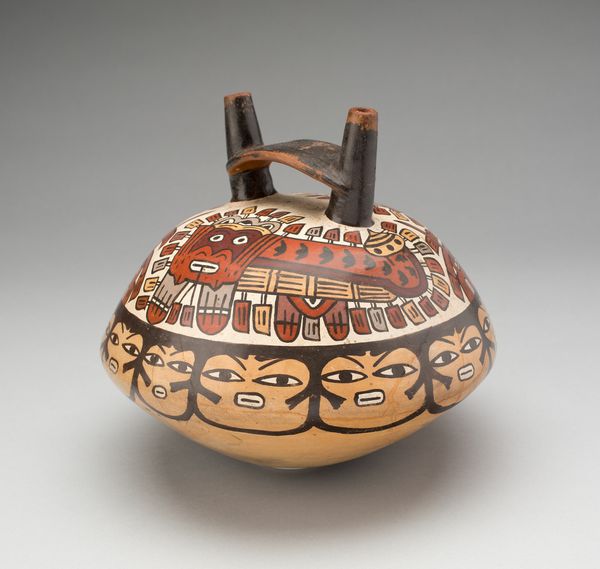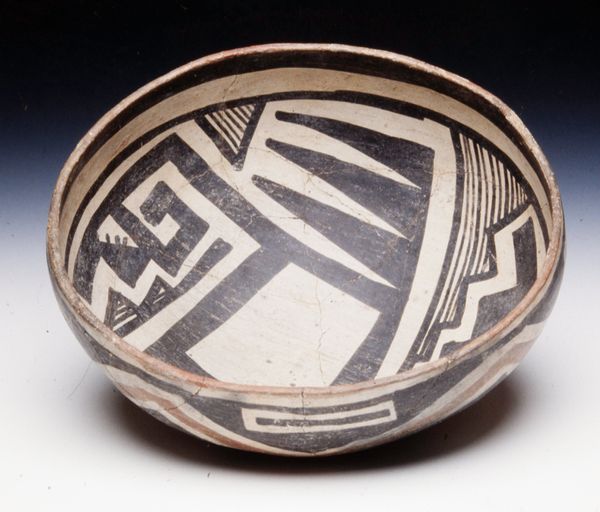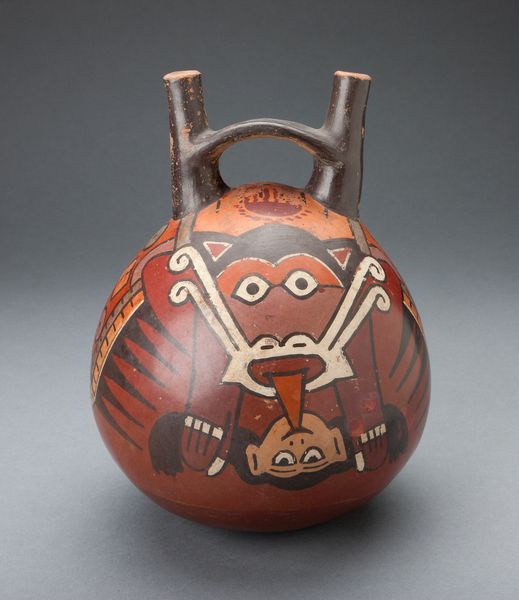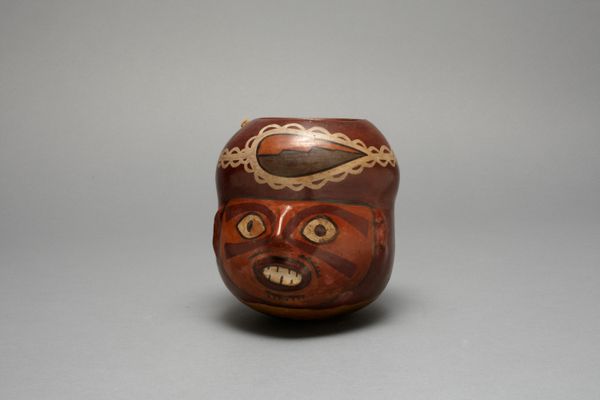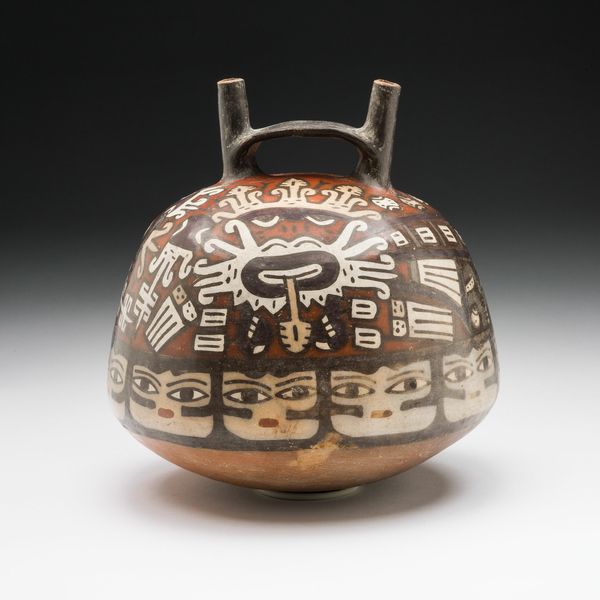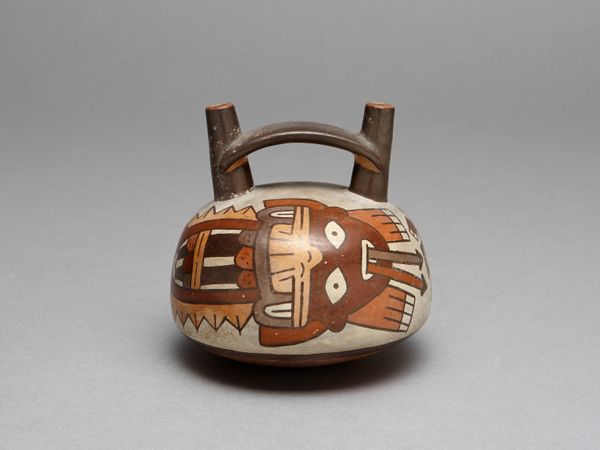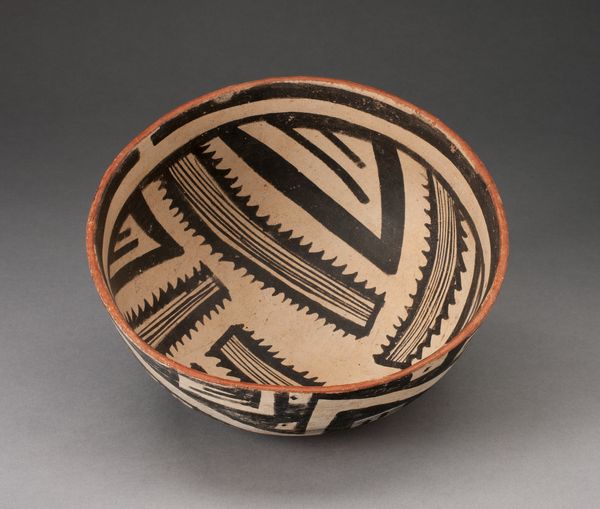
Small Hemispherical Bowl or Cover Depicting a Masked Performer c. 180 - 500
0:00
0:00
ceramic, earthenware
#
ceramic
#
figuration
#
form
#
earthenware
#
ceramic
#
indigenous-americas
Dimensions: 3 × 8.3 cm (1 3/16 × 3 1/4 in.)
Copyright: Public Domain
Editor: This object, dated from around 180 to 500, is called "Small Hemispherical Bowl or Cover Depicting a Masked Performer." It's earthenware, a type of ceramic. I’m immediately drawn to the striking geometric design and the warm colors. What strikes you about it? Curator: What intrigues me most is thinking about the labor involved. This wasn't just someone idly shaping clay. It's earthenware from the Nazca culture, meaning a significant process – digging, shaping, firing, painting with pigments derived from who-knows-where. Every step involved a particular knowledge and skill passed down through generations. Look at the painted mask – think about what natural resources had to be harvested to create those red and black pigments, then how were these pigments applied? Editor: So you're focusing on the "how" it was made rather than just what it represents? Curator: Exactly. The bowl itself likely held ritual significance. The masked performer suggests ceremonies and social structures. But the object’s *existence* is fundamentally linked to material conditions and human agency. Where did the raw materials come from? Who was excluded from the process? How was this bowl used and who used it? Editor: That's a totally different angle than I was expecting. I was focused on the imagery as a representation. Curator: But can we truly separate the imagery from its material reality? Isn’t the enduring power of the mask embedded not only in its visual representation, but also the long chain of production and cultural consumption from raw materials, skilled labor and the symbolic rituals the bowl was associated with. What stories could this bowl tell about Nazca society just from the evidence in its material presence? Editor: I hadn’t thought about it like that – it’s kind of humbling to think about all the invisible labor that went into making it. Thanks! Curator: Likewise. I wonder, what about it speaks to the labor and materials of our time, what do you think?
Comments
No comments
Be the first to comment and join the conversation on the ultimate creative platform.
